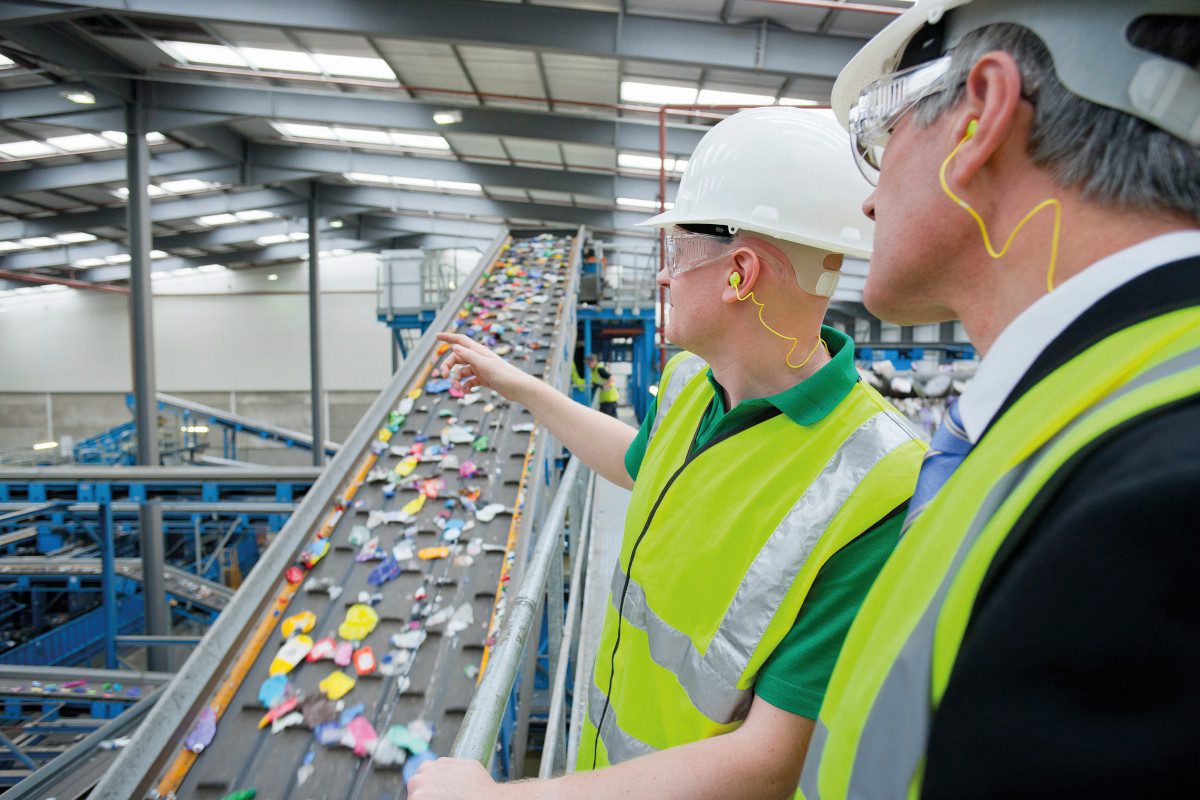
Joseph Doherty of Re-Gen Waste welcomes the consultation on the Packaging Recovery Note (PRN).
All English exporters will have to register and get an environmental permit with the technical competence requirements under the carrier/broker/dealer proposals, but only exporters wanting to issue PERNs will need to be accredited and be subject to the revised conditions on monthly reporting and the reporting of PRN/PERN revenue.
The primary purpose of the Packaging Recovery Note (PRN) should be to provide evidence of recycling and monitor progress towards meeting targets. But the PRN is also designed as a funding mechanism to encourage higher recycling levels when there is a risk of the targets not being met. However, changes are needed to increase transparency so that everyone involved in the industry knows what PRN revenue is being raised and what it is used for. Improved traceability is a priority for the system. It builds confidence. The current reporting system makes target progress prediction extremely difficult.
The verification of quality and quantity of recycling levels is becoming increasingly important and the consultation proposes significant steps to improve these. Submission of sampling and inspection reports will deliver much-needed real-time transparency to the Agencies. Monthly recycling data and PRN revenue reporting, tougher conditions of accreditation and formalised competence requirements will help to give the market confidence that material is properly recycled and that PRN prices are justified. This should raise standards within the recycling industry and drive out PRN system abuse but it will inevitably mean that some traders will leave the industry which could then lead to a more expensive PRN market.

An integrated system
The Material Recycling Facility (MRF) Code of Practice may be used as a framework to design the sampling programme. The waste shipment regulations require exporters to meet international requirements for quality. The revised PRN system will be making this more formal and transparent than the current system. My main hope is that the new system works in conjunction with waste export controls and that both systems become more integrated for waste companies. Exports are vital for our economy and tracking recycling material will become increasingly available through the development of technology.
Every MRF like the one operated by Re-Gen will see more regulations and an extension of sampling. We already follow the MRF Code of Practice but other increases in bureaucracy may mean that up to three additional quality assurance staff will be needed by MRFs to oversee the new PRN process and ensure that the evidence on exports is in order. We would like to see the Environment Agencies across the UK work together to set up a national register with all export destinations, to prevent industry replicating details for each destination and enable the market to work more freely.
Compliance fee
The consultation mentions a compliance fee approach which is intended to reduce PRN price volatility, but I believe will be quite damaging to market forces. Government needs to ensure that the compliance fee doesn’t undermine the market and remove the incentives needed to increase recycling. Consideration may need to be given to alternative measures to protect against volatility. There have been many recent examples where the PRN price increases have unlocked recycling opportunities which a compliance fee could undo. If there is a compliance fee, it should be high enough to encourage operators to ensure that material is collected and recycled and not to rely on it as a way of avoiding targets.
The use of compliance fee revenue will also need to be carefully considered by the Government to ensure it helps to increase recycling. Since 2013, the availability of a compliance fee for Waste Electrical and Electronic Equipment (WEEE) has enabled producers to avoid the difficult-to-collect WEEE by effectively paying an administration fee for any failure to meet targets. The WEEE compliance fee has generated around £12m over the last 5 years because of the gap between collection volumes and the collection targets. This has been used for research and communication projects including the Recycle Your Electricals campaign that has been widely promoted on social media. But whilst this funding is welcome, it has led to little growth in collection volumes.
The current system of Civil Sanctions whereby companies make donations to environmental charities in the event of non-compliance on packaging has come in for significant criticism as it is seen to have done little to help meet targets
Retention of the PRN under the new EPR system will do nothing to improve the design and recyclability of packaging – that will be left to the Modulated Fee that will be paid by producers for all packaging they place on the market. When the new system starts in 2024, producers will make two payments – a material-based fixed fee, paid to the Scheme Administrator to fund Council packaging recycling costs estimated to be approximately £1.7 billion, and the PRN fee paid to Compliance Schemes that will then be paid to reprocessors and exporters for evidence of recycling as per the current scheme. From 2025, the fee paid to the Scheme Administrator will be modulated to take account of packaging design and recyclability.
The compliance year and trading periods
The consideration of an extension of the PRN compliance year is of concern as it could simply delay the measures needed to meet targets and affect infrastructure development. It would also lead to confusion over targets and in my view, would undermine one of the key purposes of the PRN as a market driver to increase recycling levels
Deposit Return Scheme
The Deposit Return Scheme (DRS) is expected to be implemented at the same time as the new EPR scheme. There are concerns as to how DRS materials that are not collected under the DRS scheme (where they remain in household waste) will impact on the PRN system as these will not be subject to producer responsibility targets and charges. Over supply may reduce the price of PRN in the open market as there may end up being more recycling evidence than is needed to meet targets. It may be a given that estimated DRS materials are removed from the system. By sampling assessments and introducing protocols there may be an opportunity for collecting and treating these materials from the residual stream should large volumes be coming into the system via this route. The key to this is giving full DRS value to the recyclers.
The consultation suggests estimating the level of DRS material in recycling and residual waste to limit the potential PRNs issued. I would question what we do with the estimate. Should we assume it is removed from the system? Should we collect and treat it? Should it be separated? Should the DMO buy the tonnage of DRS materials from the PRN market?
Industry infrastructure
At Re-Gen, we see mixed dry recyclables in the residual waste as valuable commodities which will be needed in future to meet escalating targets.
It is clear that the current PRN system is in need of dynamic reform to create a model for future EPR that can deliver a more robust system of traceability and transparency. Re-Gen welcomes many of the proposals to tighten the process and ensure that producer costs can be properly justified, and that PRNs are only issued for packaging waste that has been properly recycled.
However, we must ensure that the system is not so overly burdensome and controlled that it takes away the ability for the market to deliver on future targets and the best environmental outcome.
Re-Gen is at the forefront of sorting technology, but investment in future needs can only come through the right policies that provide market freedom and certainty of regulation. I firmly believe the PRN system can deliver this and look forward to being able to work with government and the agencies to ensure the right outcome is achieved.






